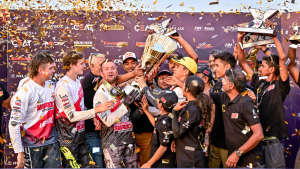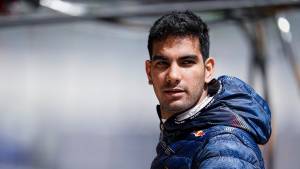A tale of two karting challenges
You know something's afoot when you're invited to watch a 'friendly' karting challenge, but the preparation that is going into this supposedly friendly karting challenge is anything but casual. Full-sized suitcases are pulled out of storage, race suits are packed away neatly, along with gloves, shoes, helmets and a good measure of hand tape. And just when you think the packing is all done, there is a litany of GoPros and mounts that are packed into a second case. Indeed, the level of equipment being packed away for this seemingly relaxed evening of karting is as out of place as a Hasselblad H4D 200MS being taken on a family vacation to shoot the odd photograph by a campfire.
No wonder, then, that it was with more than just a smidgen of suspicion about how casual and friendly this karting challenge really was that I arrived at the Spreewaldring Circuit in South Berlin. Which is where I discovered that it really wasn't. That allegedly casual karting match I had sauntered into was the Scudi Kart Cup - organised by the Scuderia AVUS - one of the longest running karting challenges in that part of the world. A championship where the amateur karter can come by and measure his prowess against professional and semi professional racers. A series that racers, no matter how experienced and qualified they might be, return to compete in aggressively, never mind how many championships they have won in the past.
And it is as I am standing there, watching the veneer of bonhomie slowly drop, allowing the undercurrents of competition to shine through, that I begin thinking about why people go racing. Is it about having fun? Is it about winning? Maybe it's a little bit about both. And maybe it's that you only have fun when you're winning and taking the competition seriously. Whatever it may be, this regional karting challenge attracts a mix of professional drivers and after-work amateurs. And at the fourth round of the championship, which is the one I had the privilege of attending, there are as many as 43 karters who have shown up eagerly, helmets and balaclavas ready, eager to be let loose on the 9bhp Honda-engined Sodikarts.
"This is just fun," one of the karters there says to me as he's kitting up. And just when I'm about to tell him that it would appear that it's never "just fun", he finishes his sentence. "But for sure every racecar driver wants to win." And then he strides off to prep for qualifying. There are others that I see there, some hopping around fitting extra seat padding into their karts, some more strapping iPhones with lap timers onto their go-karts, and still more just standing nervously by the side of the grid, trying to stay warm in the 4 degree temperature, eyeing the wet track apprehensively. This racing is serious business.
As I'm taking in this scene at the Spreewaldring, my mind travels back in time and distance. To go-kart tracks around India. And I'm not thinking of an amateur karting challenge, but instead of our National Karting Championship. It isn't scenes of cut-throat competition that come to my mind. Well, at any rate, if they do, they are few and far between. Instead of purpose-built race facilities that are all tarmac, I can visualise a karting circuit that really was once a parking lot - half tarmac, half concrete. Another karting track, one that held the final round of our national karting championship last year, that was so badly surfaced that sections of tarmac just came right off over the course of the race. I can picture a group of young karters standing around and not treating racing with the professionalism that is expected of them. Parents anxiously handling their children's gloves, helmets, and racing overalls, when they ought to be managing fine on their own. Karters strolling around with nary a care in the world, ice cream, chips and Coke in hand. Diet and fitness programme - what's that? Karters who seem more bothered about the look of it all - the hair gel and sunglasses, when what they really should be doing is taking off those sunglasses and studying their lap times. I see bonhomie that doesn't give way to competition, but instead to a lackadaisical attitude. And anger off track that's often mistaken for racing aggression. Yes, there are exceptions to the rule. But what's worrying is that I don't see any of this changing anytime soon. And we're talking about karting - the first, most vital, crucial step in motorsport itself.
There's no denying that there are people in the Indian karting scene with the know how and technical prowess to train the next generation of karters - people like Akbar Ebrahim and Rayomand Banajee. And they certainly are trying. But the fundamental truth is that while you can put a body into a pair of overalls, strap him into a go-kart, train him, teach him racing lines, and impart enough knowledge to give him some semblance of skill, you cannot transform him into a racecar driver. That transformation lies deep within the consciousness of the mind. And it is something so individual and personal that it can only be influenced, never forced.
At the Spreewaldring I watch as a racer jumps out of his go-kart, hopping mad at himself for spinning out and finishing a mere second. At the same time I'm wondering about our own National Karting Championship that's supposed to kick off soon in India, and how the calendar (at that point) is still to be finalised. The contrasts are stark and scary all at once.














